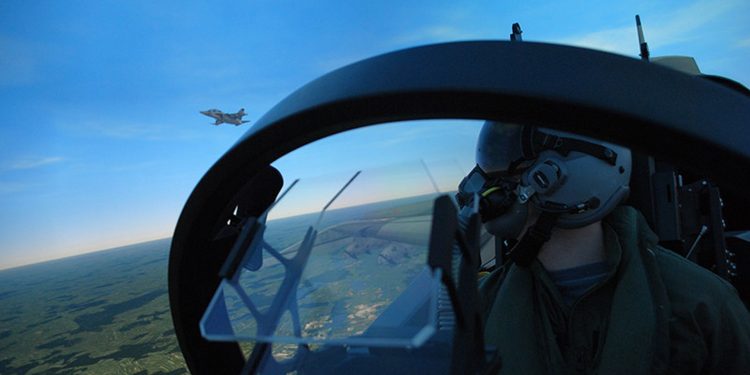Joint exercises that connect between the different divisions in the IAF and even between the IDF’s branches, virtual reality, and centers for operational training in each division – are these are some of the changes that will be made in the field of simulators in the IAF? Also, what are the advantages of training with a simulator?
The IDF is set to make significant changes in the future, one of which is the development of its ability to train in separate simulators that are connected – holding joint exercises between different units on different simulators, to practice multi-branch cooperation.
“When the IAF carries out missions, it operates in cooperation – the Air Traffic Controller, aircrew members, the controller from the general command, and an Air Defense Operator, all work together”, explained Lt. Col. E, Head of the Simulator Branch in the Materiel Directorate. “Currently, each division has a simulator, from which personnel can train for external situations they might face; however, there is no complete training process that includes all the relevant bodies in one simulation, each from its own separate simulator.
“Such overlapped training only exists in real-world joint exercises, and we are working to connect between the different division’s simulators, to allow for simulated joint exercises. The IAF often cooperates with the navy and ground forces. The connection between simulators will improve the cooperation and joint training with other branches of the IDF, and thus improve the IDF’s operational fitness and capabilities.”
To fully understand the significance of these simulated exercises, we must know the importance of simulators in the field of training and preparation for operational activity. For instance, in fighter pilot training, they practice on a simulator before flying on an operational platform. A simulator allows the pilot to train for emergencies that cannot be done in the air without costly consequences.
“Blue and White” Simulators
The IAF’s aircraft are unique. They are equipped with Israeli systems and are often updated to match the IAF’s needs. The “Karnaf” (Hercules C-130) was purchased abroad with its own operating systems, and its aircrew members trained with a simulator that was developed for it overseas. Today, after it went through a long enhancement process, the operating systems are so different that training abroad became irrelevant. “The simulators abroad lack the classified IAF operating systems, and today, with the core of the ‘Karnaf’ flight system being changed, it is time to develop a simulator that will match the ‘new’ aircraft, and therefore perfectly simulate its specific flights and operations”.
The “Karnaf” (Hercules C-130HI) aircraft isn’t the only example of an IAF platform that requires designated simulator training overseas. These are held quite often in the transport and helicopter divisions, however, recently, new simulators designed specifically for the IAF’s platforms and systems are under development, instead of settling for the international ones.
Whether the new flight simulators were developed in Israel or abroad, they become more and more Israeli. In other words, they become simulators that not only look like the IAF platform but also contain the unique Israeli systems required to simulate every mission accurately.
Simulating Every Division’s Missions
The IAF’s Center for Mission Training, located at Hatzor AFB, operates nonstop. Training exercises at the center act as a great replacement for aerial training since they simulate real missions. One of the IAF’s destinations is to convert some of the aerial training hours to simulator training hours, especially in the IAF’s RPAV Division. The goal of this process is to, among other things, spare fuel and prevent the deterioration of aircraft, as well as utilize the many advantages of the simulators that can realistically simulate flight and warfare theatres, and allow practicing intensive scenarios that cannot always be done in training.
For that reason, more training centers for the fighter, helicopter, and RPAV divisions are in the works, which will enable the IAF to allocate more simulator flight hours. “It’s very relevant for emergency training”, explains Maj. L, Head of the Weapons and RPAV Simulators Department. “Even if we had free gas, there are malfunctions and emergencies you can’t simulate in the air. That’s the advantage of the flight simulator – you can face extreme malfunctions, deviate from the allowed speed and altitude, all without risking both the aircraft and human life”.
“The simulator’s precision allows us to practice the same way we fight”, concludes Maj. L. “We’re able to create a precise operational theatre in the simulator that is both authentic and dated. When we’ll have the capability to hold joint simulator training and train optimally with other IAF and IDF factors, we’ll be able to conduct a ‘dress rehearsal’ before every operational activity”.











